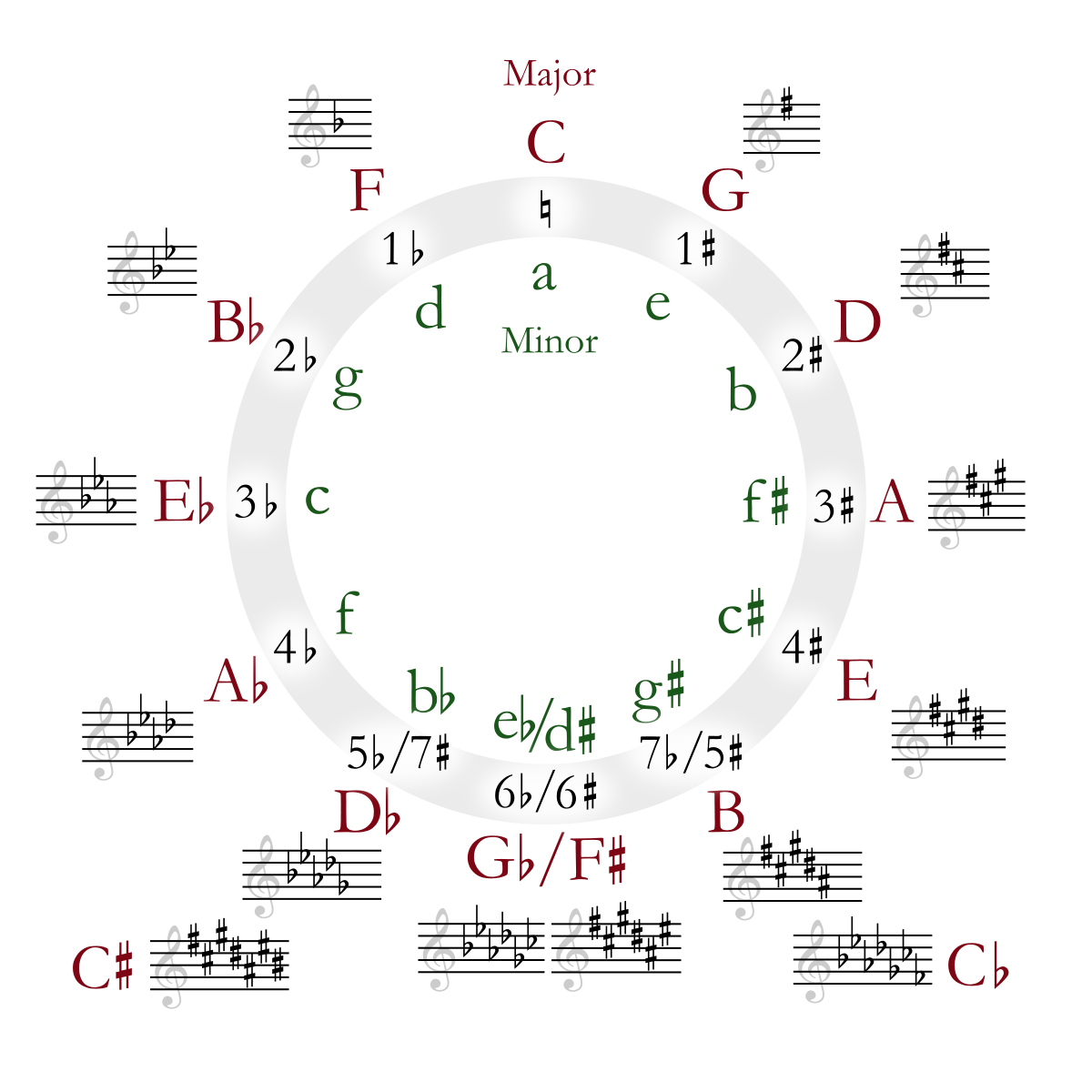lpetrich
Contributor
As to why we use the musical scales that we do, it is to produce overlapping harmonics, because that sounds very pleasing to us. Not quite overlap, however, sounds bad: "dissonance".
ET = "equal temperament" tuning, that makes all neighboring note intervals equal.
# ST = number of semitones or neighboring-note intervals. -- Interval (music)
Interval (music)
It's easy to see how an octave makes overlaps (starred):
1, 2, 3, 4, ... and 2, 4, 6, 8, ... -> 1, 2*, 3, 4*, 5, ...
A fifth makes 1, 3/2, 2, 3*, 4, 9/2, 5, ...
A major chord, like C4-E4-G4, is 1, 5/4, 3/2, 2, 5/2, 3*, 15/4, 4, 9/2, 5*, 6*, 25/4, ...
Etc.
 Equal temperament is a compromise for making all musical keys sound OK. In past centuries, various alternatives have been used, like
Equal temperament is a compromise for making all musical keys sound OK. In past centuries, various alternatives have been used, like  Pythagorean tuning and
Pythagorean tuning and  Meantone temperament
Meantone temperament
Pythagorean tuning makes the fifths and fourths exact, but if one wants to make all twelve fifths fit, at least one of them will be bad: a Wolf interval
Wolf interval
For a single wolf interval, (3/2)12 * 2-7 ~ 1.01364 -- that difference is enough to sound dissonant, thus the "wolf" in its name.
 Quarter-comma meantone makes the major thirds exact. That makes a fifth 51/4. Third-comma meantone makes the minor thirds exact. That makes a fifth (10/3)1/3. Both of these fifths make worse wolf fifths than Pythagorean tuning, however.
Quarter-comma meantone makes the major thirds exact. That makes a fifth 51/4. Third-comma meantone makes the minor thirds exact. That makes a fifth (10/3)1/3. Both of these fifths make worse wolf fifths than Pythagorean tuning, however.
Pythagorean and meantone tuning are various forms of Just intonation. There are also versions that make some key's major chords perfect ratios, like (1, 5/4, 3/2) or minor chords perfect ratios, like (1, 6/5, 3/2).
Just intonation. There are also versions that make some key's major chords perfect ratios, like (1, 5/4, 3/2) or minor chords perfect ratios, like (1, 6/5, 3/2).
| Interval | # ST | Ratio | ET Value | 5th Exact | 5th value | Mj3rd value | Mn3rd value |
|---|---|---|---|---|---|---|---|
| Octave | 12 | 2 | 2 | 2 | 2 | 2 | 2 |
| Fifth | 7 | 3/2 | 1.49831 | 3/2 | 1.5 | 1.49535 | 1.49380 |
| Fourth | 5 | 4/3 | 1.33484 | 4/3 | 1.33333 | 1.33748 | 1.33887 |
| Major third | 4 | 5/4 | 1.25992 | 81/64 | 1.26563 | 1.25 | 1.24483 |
| Minor third | 3 | 6/5 | 1.18921 | 32/27 | 1.18519 | 1.19628 | 1.2 |
ET = "equal temperament" tuning, that makes all neighboring note intervals equal.
# ST = number of semitones or neighboring-note intervals. --
It's easy to see how an octave makes overlaps (starred):
1, 2, 3, 4, ... and 2, 4, 6, 8, ... -> 1, 2*, 3, 4*, 5, ...
A fifth makes 1, 3/2, 2, 3*, 4, 9/2, 5, ...
A major chord, like C4-E4-G4, is 1, 5/4, 3/2, 2, 5/2, 3*, 15/4, 4, 9/2, 5*, 6*, 25/4, ...
Etc.
Pythagorean tuning makes the fifths and fourths exact, but if one wants to make all twelve fifths fit, at least one of them will be bad: a
For a single wolf interval, (3/2)12 * 2-7 ~ 1.01364 -- that difference is enough to sound dissonant, thus the "wolf" in its name.
Pythagorean and meantone tuning are various forms of
Last edited by a moderator:


